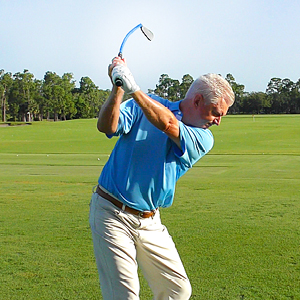Best Golf Training Aids for Wrist Hinge
Introduction: The Power of the Wrist in Golf
The golf swing is a complex motion, and at it’s core lies a crucial element often overlooked by amateur players: the wrist hinge. This small movement can significantly impact your swing, influencing everything from power generation to accuracy.
Mastering the wrist hinge can be the key to realizing your full potential on the golf course.
Understanding Wrist Hinge: The Foundation of a Powerful Swing
Wrist hinge refers to the angle created between your forearms and the club shaft during your backswing and downswing. When executed correctly, it allows you to generate more power, maintain control, and achieve better impact position.
The biomechanics of wrist hinge are fascinating. As you cock your wrists during the backswing, you’re essentially loading potential energy into your swing.
This energy is then released through impact, resulting in increased clubhead speed and greater distance.
Proper wrist hinge also helps maintain the club on the fix swing plane, leading to improved accuracy and consistency.
Many golfers struggle with issues like early release, over-hinging, or lack of flexibility. These challenges can significantly impact your game, but they’re not insurmountable.
With the right training aids and dedicated practice, you can master the art of wrist hinge and take your golf game to new heights.
Top Training Aids for Perfecting Your Wrist Hinge
1. The SKLZ Gold Flex: Your Rhythm and Power Enhancer <<< CLICK HERE
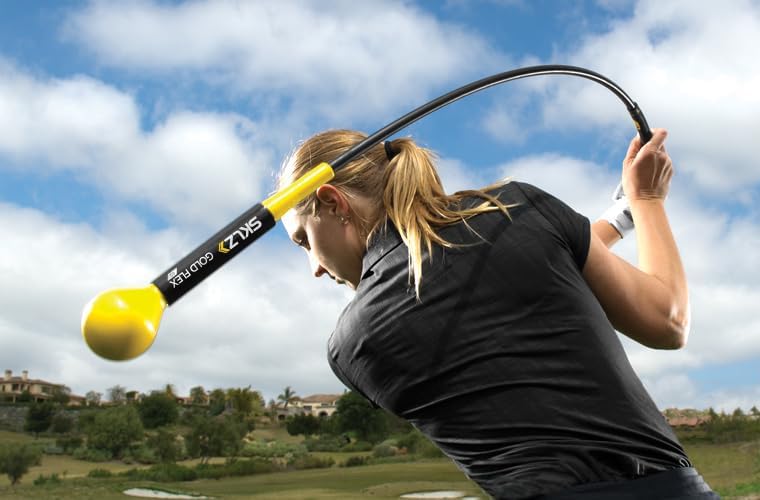
The SKLZ Gold Flex is a versatile training aid that resembles a club with a flexible shaft and a weighted head. It’s design promotes proper wrist hinge while also helping you develop a smooth, powerful swing tempo.

To use the Gold Flex effectively, start by taking your normal stance and grip. As you swing, the flexible shaft will naturally encourage your wrists to hinge correctly.
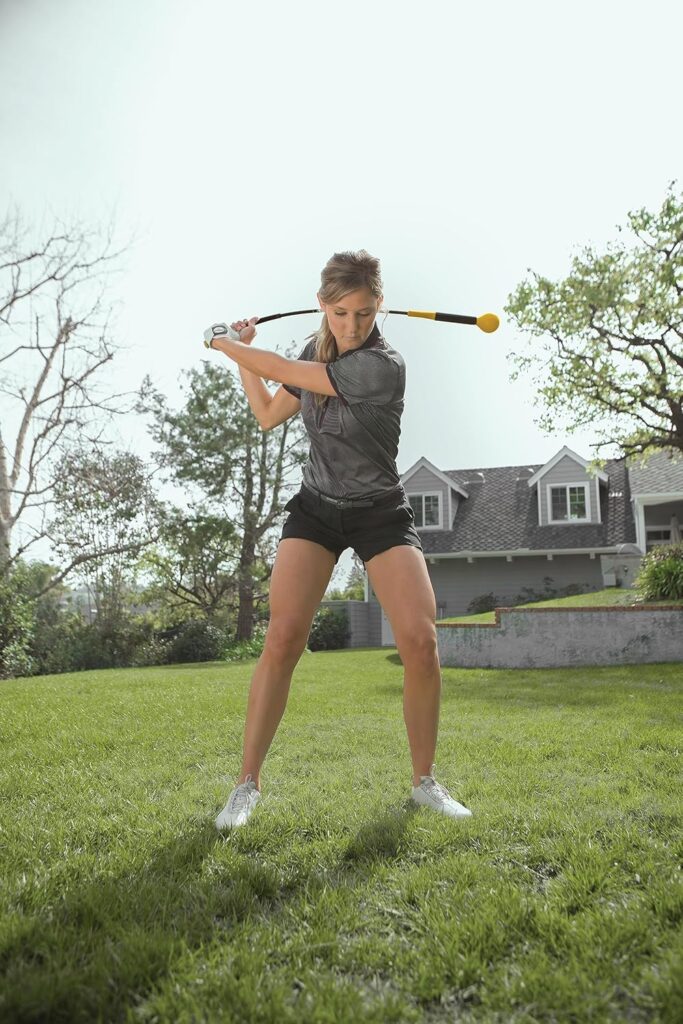
The weighted head provides resistance, strengthening the muscles involved in the swing and improving your overall swing mechanics.
I’ve found the Gold Flex particularly useful as part of my pre-round warm-up routine. Not only does it help me loosen up, but it also reinforces proper wrist hinge before I hit the course.

This mental and physical preparation can make a significant difference in your performance.
2. TheStack: Your Personal Wrist Position Coach
TheStack is a small, lightweight device that attaches to your club just below the grip. It’s designed to guide your wrists into the fix position throughout your swing.
Using the TheStack is straightforward. Simply clip it onto your club and take your normal grip.
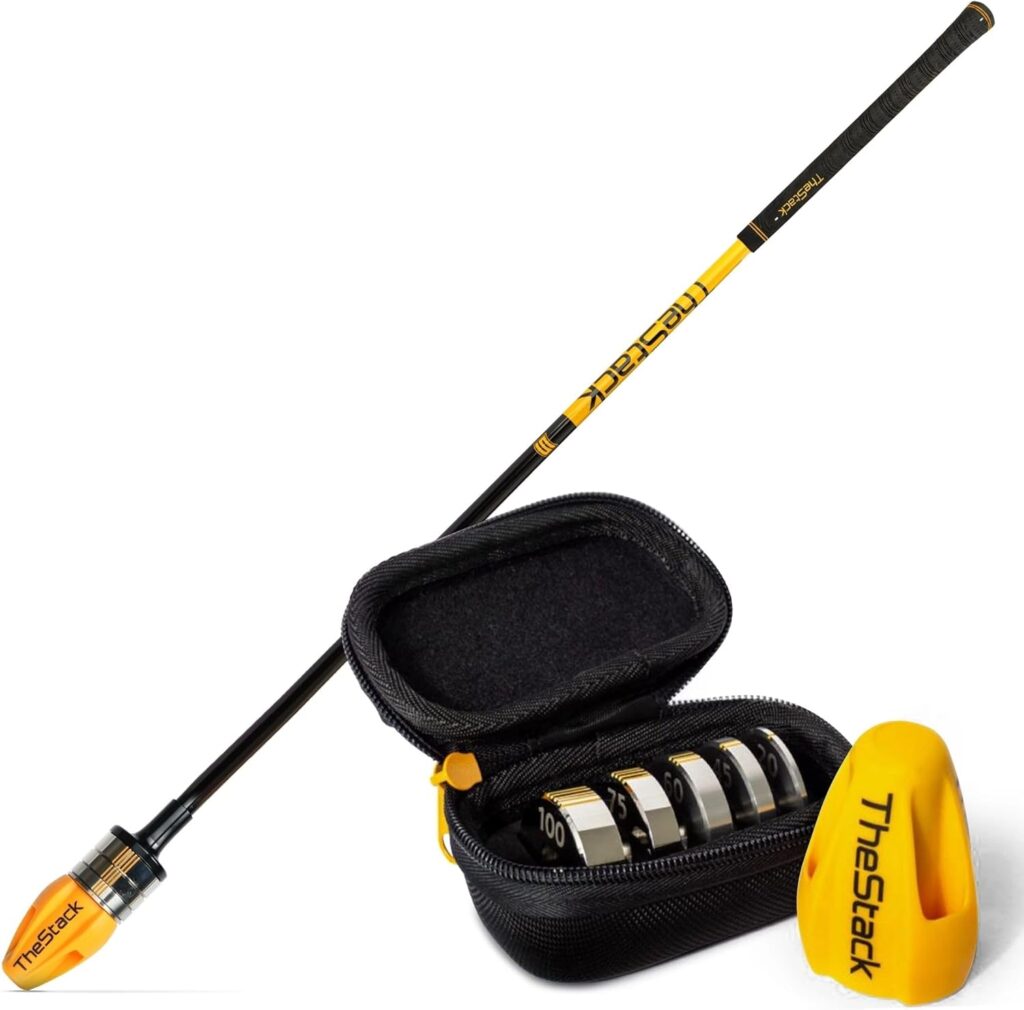
As you swing, the device will gently guide your wrists into the proper position.
If your wrists are incorrectly positioned, you’ll feel TheStack making contact with your forearm, providing instant feedback.
One of the biggest advantages of TheStack is it’s versatility. You can use it with any club in your bag, allowing you to practice proper wrist hinge with every shot in your arsenal.
This consistency in training can lead to significant improvements in your overall game.
3. Tour Striker Smart Ball: Mastering Connection and Release <<< CLICK
While not exclusively a wrist hinge trainer, the Tour Striker Smart Ball is an excellent tool for improving overall swing mechanics, including wrist action. This inflatable ball is designed to be held between your forearms during your swing.
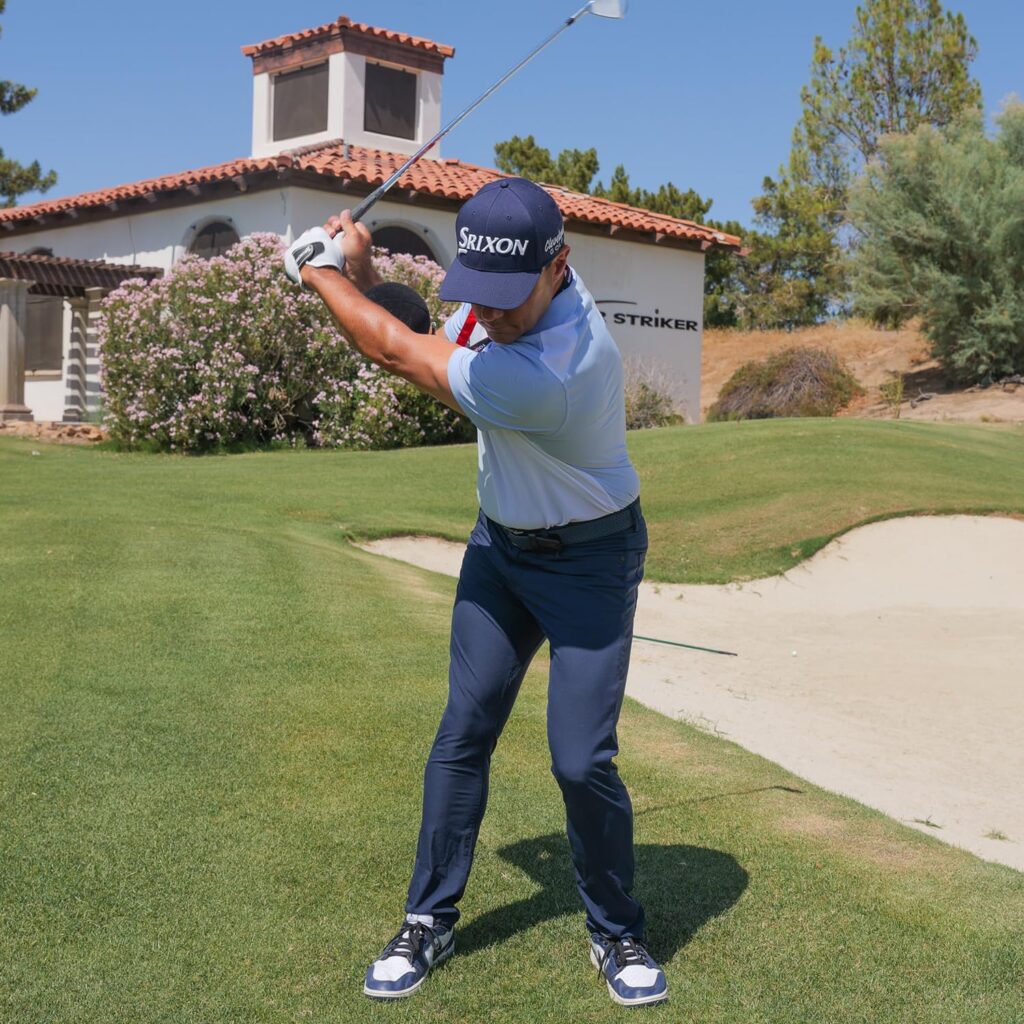
By keeping the Smart Ball in place throughout your swing, you’re forced to maintain proper arm and wrist positions. This promotes a connected swing and helps prevent common issues like early extension or ‘chicken wing’ elbows.
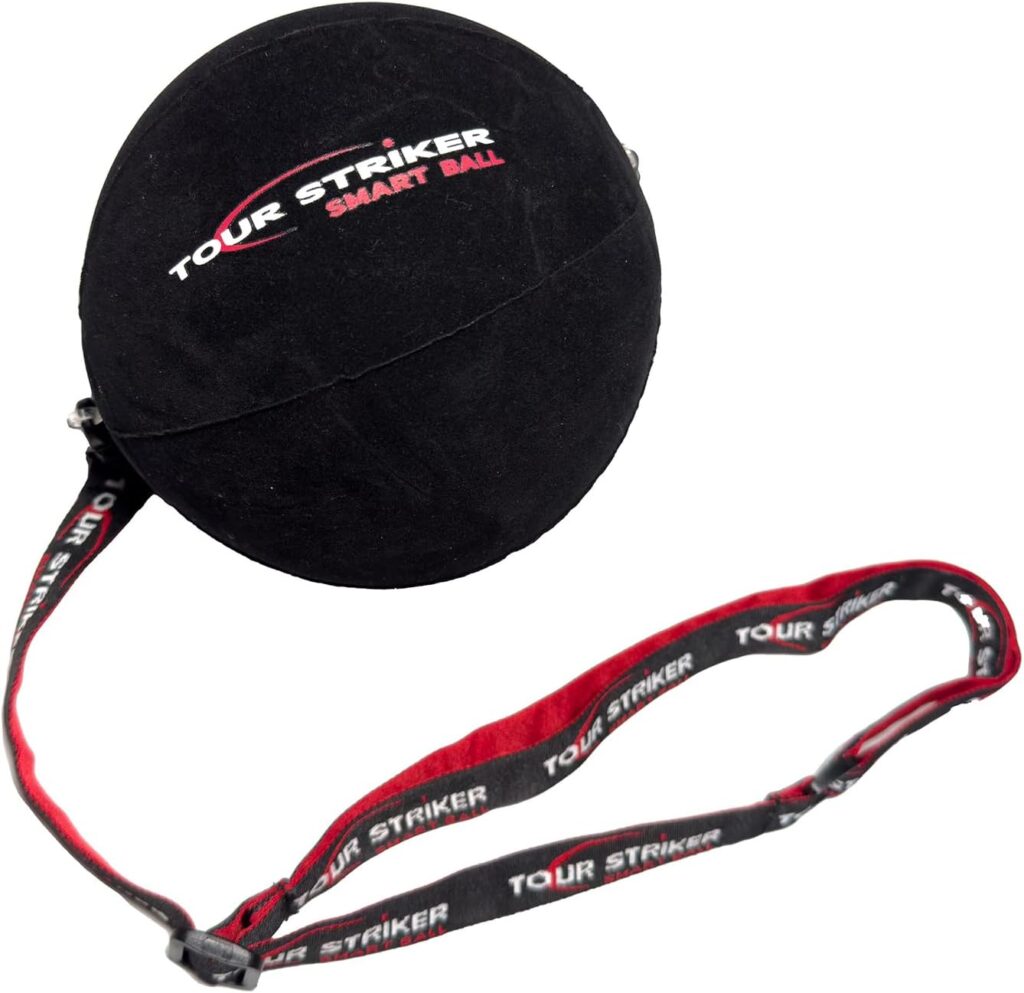
The Smart Ball is particularly effective for golfers who struggle with consistency. By promoting a more connected swing, it helps eliminate variables that can lead to erratic shots.
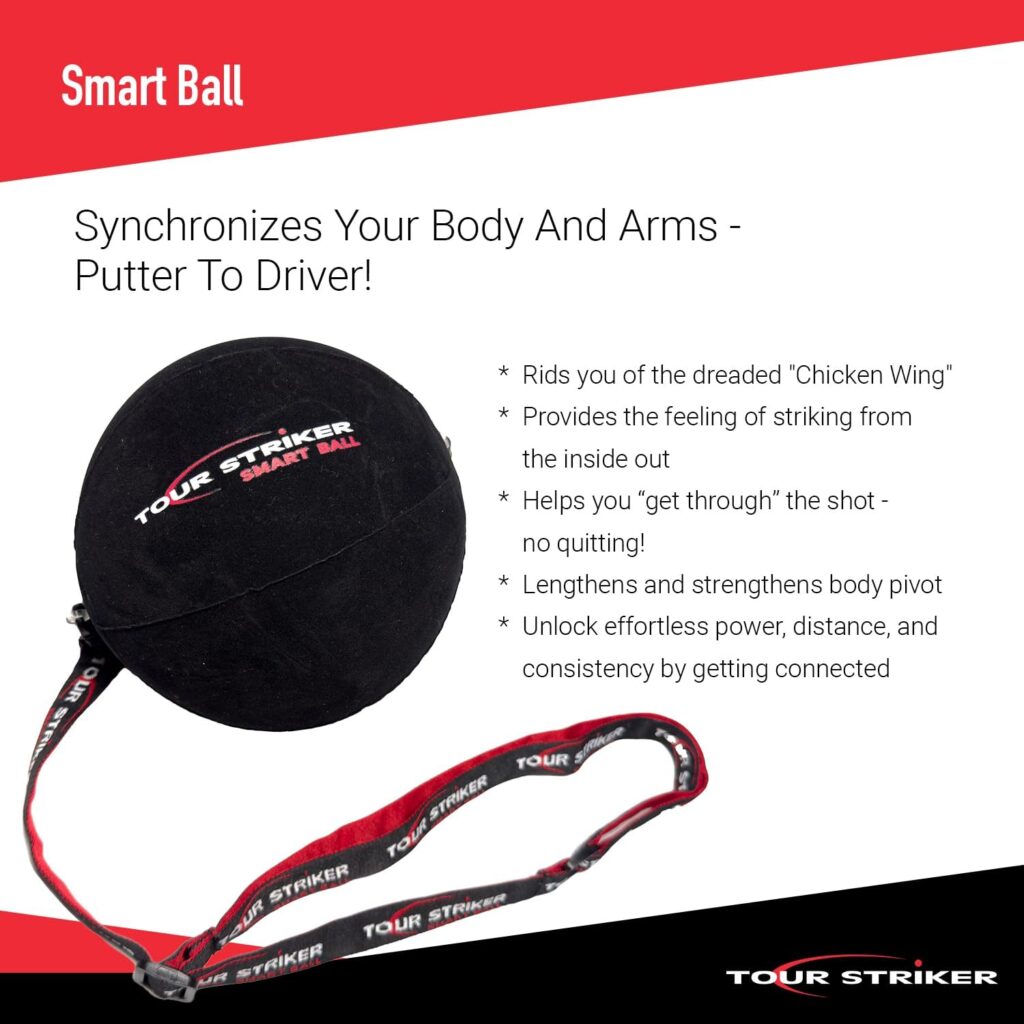
I’ve seen dramatic improvements in my ball striking since incorporating the Smart Ball into my practice routine.
4. Lag Shot: <<< CLICK HERE Feel the Flow of Perfect Timing
The Lag Shot is a training club with a super-flexible shaft. This unique design forces you to use proper sequencing and wrist hinge to successfully hit the ball.

When you first try the Lag Shot, you might struggle to make solid contact. That’s because the flexible shaft exposes any flaws in your swing, particularly in your wrist action and timing.
With practice, you’ll learn to properly hinge your wrists and release the club at the right moment, resulting in more powerful and accurate shots.
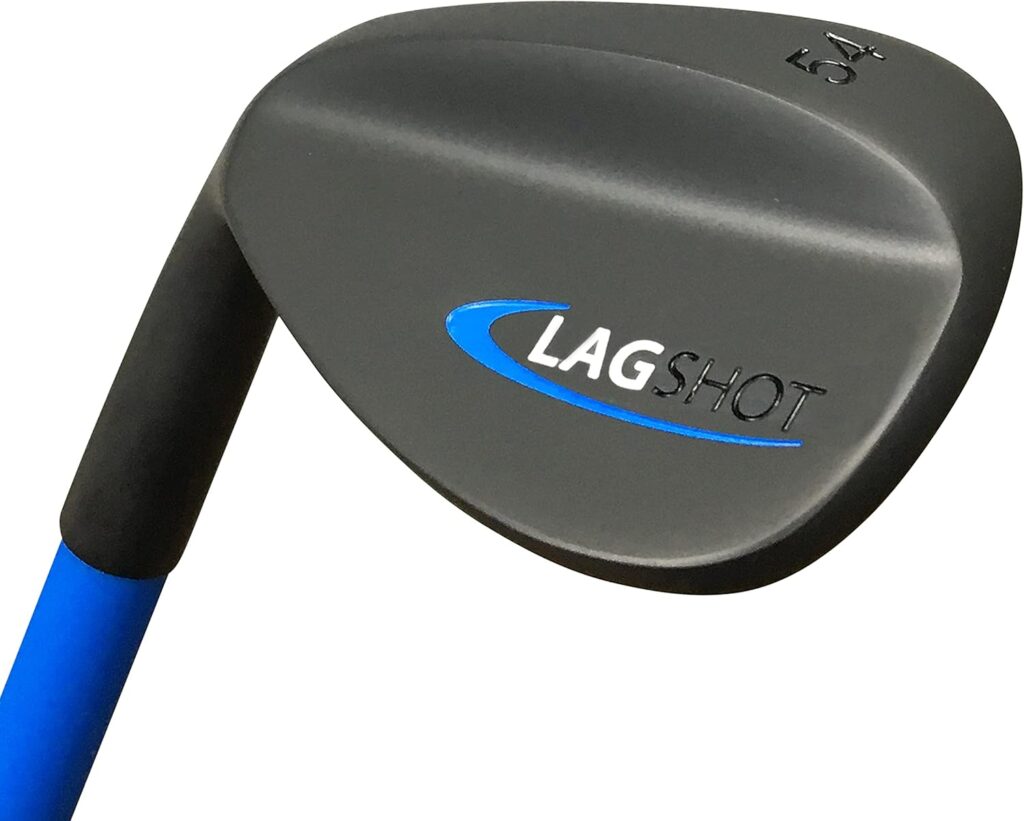
I was skeptical of the Lag Shot at first, but after a few practice sessions, I noticed a significant improvement in my timing and power. The immediate feedback it provides is invaluable for developing a feel for proper wrist hinge.
THE LAG SHOT IS BY FAR ONE OF MY FAVOURITE TRAINER >>> CLICK HERE <<< TO GRAB YOUR SET
5. SKLZ Hinge Helper: The Wrist Angle Whisperer <<< CLICK
The SKLZ Hinge Helper is a simple yet effective tool specifically designed to teach proper wrist hinge. It attaches to your club and provides audible feedback when you achieve the fix wrist cock.
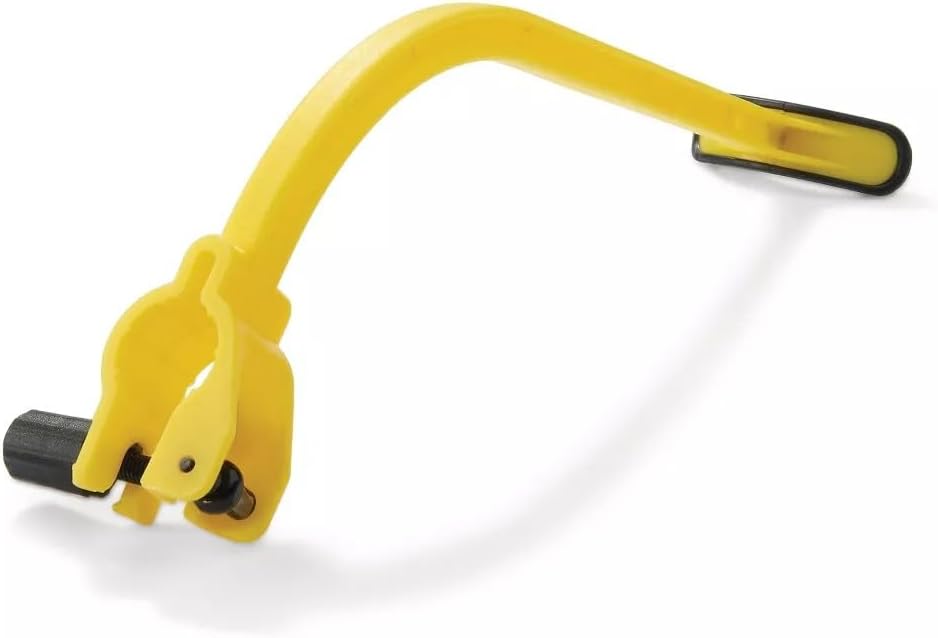
To use the Hinge Helper, attach it to your club and take your normal stance. As you start your backswing, you’ll hear a click when your wrists hinge to the fix angle.
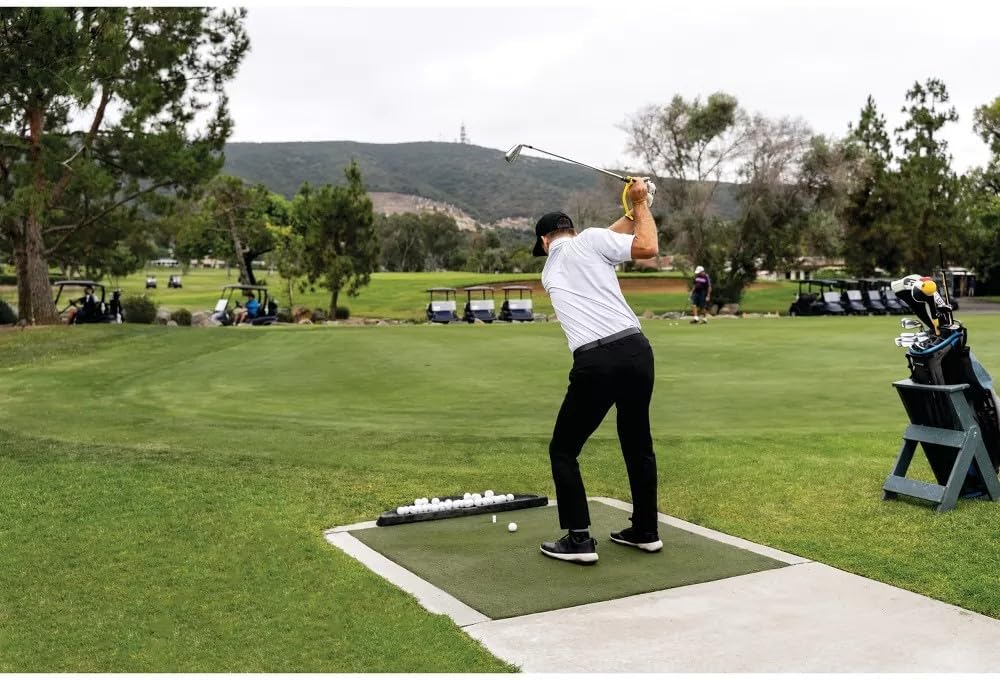
This immediate feedback helps you develop muscle memory for proper wrist action.
The Hinge Helper has been a game-changer for many of my students who struggled with wrist hinge. The audible feedback makes it easy to understand when you’re doing it right, even without visual cues.
Implementing Wrist Hinge Training into Your Practice Routine
Now that we’ve explored some of the best wrist hinge training aids, let’s discuss how to incorporate them into your practice routine effectively.
Start Slow and Focus
Begin with short practice sessions focusing solely on wrist hinge. This allows you to concentrate on the feeling of proper movement without worrying about other aspects of your swing.
I recommend starting with 5-10 minute sessions, gradually increasing the duration as you become more comfortable.
Use a Mirror for Visual Feedback
When practicing with your chosen training aid, use a mirror to visually confirm that your wrists are hinging correctly. This visual feedback, combined with the tactile feedback from the training aid, can speed up your learning.
I often set up a portable mirror at the driving range for this purpose.
Gradually Combine into Full Swings
Once you’re comfortable with the wrist hinge motion, start incorporating it into your full swing. Use the training aid for a few swings, then try to copy the feeling without it.
This transition is crucial for transferring your improved wrist hinge to your actual game.
Practice Regularly
Consistency is key when it comes to changing your swing. Aim to practice with your wrist hinge training aid for at least 15-20 minutes a day, even if you can’t make it to the range.
I keep a training aid in my office and often practice during short breaks throughout the day.
Video Your Progress
Record your swing periodically to track your improvement. Pay close attention to your wrist position at key points in your swing, such as the top of the backswing and at impact.
Comparing videos over time can be incredibly motivating as you see your progress.
Common Pitfalls and How to Avoid Them
While wrist hinge training aids can be incredibly useful, there are some potential pitfalls to be aware of:
Over-reliance on the Aid
Remember, the goal is to internalize the feeling of proper wrist hinge. Don’t become dependent on the training aid.
Regularly practice without it to confirm you can copy the fix motion on your own.
I recommend alternating between using the aid and practicing without it during each session.
Ignoring Other Aspects of Your Swing
While wrist hinge is crucial, it’s just one part of a complex motion. Don’t neglect other important elements like posture, grip, and body rotation.
A holistic approach to improving your swing will yield the best results.
Forcing the Motion
Proper wrist hinge should feel natural, not forced. If you’re straining to achieve the ‘correct’ position, you may be overdoing it. Focus on a smooth, relaxed motion.
I often tell my students to imagine their wrists are made of butter, melting smoothly into the fix position.

Neglecting Flexibility
Wrist flexibility plays a significant role in your ability to hinge properly. Incorporate wrist stretches and exercises into your routine to improve your range of motion.
Simple exercises like wrist rotations and flexion/extension movements can make a big difference.
Adapting Wrist Hinge Technique to Different Shots
Once you’ve mastered the basic wrist hinge, you can start adapting it to different types of shots:
Driver
With the driver, focus on maintaining your wrist hinge through impact to maximize power and distance. The longer shaft of the driver needs a slightly different feel, so practice specifically with your driver to get comfortable with the timing.
Irons
For iron shots, a slightly earlier release can help you achieve a descending blow and better ball striking. Experiment with different release points to find what works best for each club in your bag.
Wedges
In short game shots, a quieter wrist action often leads to better control and consistency. Practice keeping your wrists more stable during pitches and chips to improve your touch around the greens.
Putting
Even in putting, a slight wrist hinge can help you maintain a smooth, pendulum-like stroke. However, be careful not to overdo it – the wrist action in putting should be minimal.
From Basics to Mastery: Building on Your Wrist Hinge Skills
Mastering wrist hinge is a fundamental step in your progress to becoming a better golfer. As you become more comfortable with proper wrist action, you’ll find that other aspects of your game begin to improve as well.
Your increased power and control will open up new shot-making possibilities, allowing you to tackle more challenging courses and situations with confidence. You might find yourself able to shape shots more effectively or control your trajectory with greater precision.
As you progress, focus on how the improved wrist action affects your entire swing sequence, from takeaway to follow-through. You may notice improvements in your tempo, balance, and overall consistency.
Practice Exercises to Reinforce Your Learning
To help cement your newfound wrist hinge skills, try these exercises:
The 9 to 3 Drill
Using your chosen training aid, practice swinging the club from a 9 o’clock position in your backswing to a 3 o’clock position in your follow-through. Focus on hinging your wrists fully in the backswing and releasing smoothly through impact.
This drill helps isolate the wrist hinge motion and improve your timing.
One-Handed Swings
Practice swinging with just your lead hand (left hand for right-handed golfers). This isolates the wrist action and helps you feel the fix movement more clearly.
Start with slow, deliberate swings and gradually increase your speed as you become more comfortable.
Slow-Motion Swings
Perform full swings in slow motion, paying close attention to your wrist position at each stage of the swing. This helps build awareness and control.
I often use this exercise as a warm-up before hitting balls, as it helps me focus on the fix movements.
Impact Bag Drills
Use an impact bag to practice achieving the fix wrist position at impact. This helps you feel the sensation of a properly timed release.
Start with short swings and gradually work up to full swings as you become more comfortable.
Frequently Asked Questions
What is wrist hinge in golf?
Wrist hinge in golf refers to the angle created between your forearms and the club shaft during your backswing and downswing. It’s a crucial element of the golf swing that helps generate power and maintain control.
How do I improve my wrist hinge in golf?
You can improve your wrist hinge by using training aids like the SKLZ Gold Flex or Swingyde, practicing specific drills, and focusing on the fix wrist position during your swing. Regular practice and feedback are key to improvement.
What are the best golf training aids for wrist hinge?
Some of the best golf training aids for wrist hinge include the SKLZ Gold Flex, Swingyde, Tour Striker Smart Ball, Lag Shot, and SKLZ Hinge Helper. Each of these aids offers unique benefits for improving your wrist hinge technique.
Can improving wrist hinge increase my golf swing speed?
Yes, improving your wrist hinge can significantly increase your golf swing speed. Proper wrist hinge allows you to store and release energy more efficiently, resulting in faster clubhead speed at impact.
How often should I practice wrist hinge drills?
For best results, try to practice wrist hinge drills for 15-20 minutes daily. Consistency is key when developing new swing mechanics.
Is wrist hinge the same for all golf clubs?
While the basic principle of wrist hinge is the same for all clubs, the exact timing and degree of hinge may vary slightly depending on the club you’re using. Drivers typically require a fuller wrist hinge, while shorter clubs may need a more controlled hinge.
Can over-hinging my wrists cause problems in my golf swing?
Yes, over-hinging your wrists can lead to issues like loss of control, inconsistent contact, and even injury. It’s important to find the right balance and not force an exaggerated wrist hinge.
How do I know if I’m hinging my wrists correctly in my golf swing?
Proper wrist hinge should feel natural and allow for a smooth transition in your swing. Using training aids or working with a golf pro can provide feedback on whether you’re hinging correctly.
Video analysis can also be helpful in assessing your wrist position.
Can wrist hinge help with my slice?
Improving your wrist hinge can potentially help reduce a slice by promoting a squarer clubface at impact. However, it’s important to address other aspects of your swing as well, as a slice can have multiple causes.
Are there any wrist exercises I can do off the course to improve my golf swing?
Yes, there are several wrist exercises you can do to improve flexibility and strength for your golf swing. Simple exercises like wrist curls, rotations, and squeezing a stress ball can be useful.
Always ask with a fitness professional or your doctor before starting any new exercise regimen.
Key Takeaways
- Proper wrist hinge is crucial for power, control, and consistency in your golf swing.
- Training aids like the SKLZ Gold Flex, Swingyde, and Lag Shot can significantly improve your wrist hinge technique.
- Regular, focused practice with these aids can help you internalize the fix wrist action.
- Be mindful of common pitfalls like over-reliance on aids or forcing the motion.
- Adapt your wrist hinge technique to different types of shots for maximum versatility.
Disclaimer I can make affilliate commission by you clicking on my link to buy. you as the customer do not pay any extra for going through my link.
The Golf Club Nation Team
